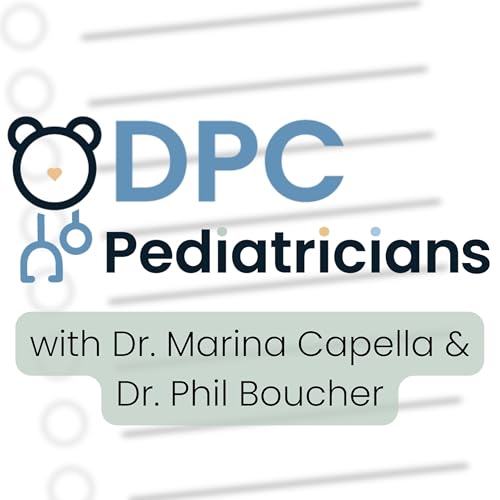
What Equipment Do I Need to Start?
Artikel konnten nicht hinzugefügt werden
Der Titel konnte nicht zum Warenkorb hinzugefügt werden.
Der Titel konnte nicht zum Merkzettel hinzugefügt werden.
„Von Wunschzettel entfernen“ fehlgeschlagen.
„Podcast folgen“ fehlgeschlagen
„Podcast nicht mehr folgen“ fehlgeschlagen
-
Gesprochen von:
-
Von:
Über diesen Titel
Podcast Summary:In this episode of DPC Pediatricians, Dr. Phil Boucher and Dr. Marina Capella dive into a fundamental question for anyone starting a Direct Primary Care (DPC) pediatric practice: What equipment do you really need at the beginning?
Key Highlights:
Start Lean and Grow as You GoNew DPC pediatricians often over-purchase equipment trying to mirror traditional practices. The hosts emphasize starting with only what’s essential — many fancy tools can wait or be added later.
Clinical Essentials FirstMust-have items include: stethoscope, otoscope, ophthalmoscope, infant + adult scales, and basic vitals tools. You don’t need expensive versions to provide great care.
You Don’t Need a Fully Stocked Exam RoomDr. Marina recalls seeing patients in a furniture-less room early on. Dr. Phil stresses using what's available and pivoting creatively (e.g., running to the hardware store for a black light last-minute).
Affordable Furnishings Work Just FineIKEA-style tables, secondhand furniture, and minimalist setups are completely acceptable. Keep it clean and functional; kids and parents care more about care than decor.
Lab Supplies Can Be MinimalStart with just rapid strep, flu, and urine tests. Sending labs to Quest or LabCorp is often more practical early on than drawing blood in-house — especially without an MA.
Don’t Let Labs Hold You BackGetting group purchasing discounts is helpful, but not required to launch. Most pediatric patients won’t need frequent labs, and many parents are used to outside lab billing.
Expensive Tools Can WaitBig-ticket items like vision screeners, lead testers, and hearing machines are nice but not needed immediately. Create a wish list tied to financial or patient milestones.
Paperwork Still MattersKeep printed forms handy (PHQ-9, postpartum screens, Ages & Stages, etc.). A small stock of printed materials can go a long way in well visits.
Tech & Admin BasicsA reliable laptop, printer, Wi-Fi router, and paper documents are sufficient to run a lean office. An EMR and e-prescribing setup are essential for functionality.
Be Flexible & CreativeYou’ll encounter unplanned needs (like Nair for a hair tourniquet or extra bandages) — just get them when they arise. Most items can be picked up locally.
Use Free & Community ResourcesHelpful tools include:
* The DPC Pediatricians Facebook Group (shared files with starter lists)
* Startup guides from dpcpediatrician.com
* The upcoming DPC Virtual Summit in September
Takeaway Message:
You don’t need a perfect, fully equipped practice to start seeing patients. Begin with clinical basics, build smart, spend conservatively, and expand your tools as your practice grows. The beauty of DPC is that you get to design your setup in a way that supports your vision and budget.
This is a public episode. If you would like to discuss this with other subscribers or get access to bonus episodes, visit dpcpediatricians.substack.com




